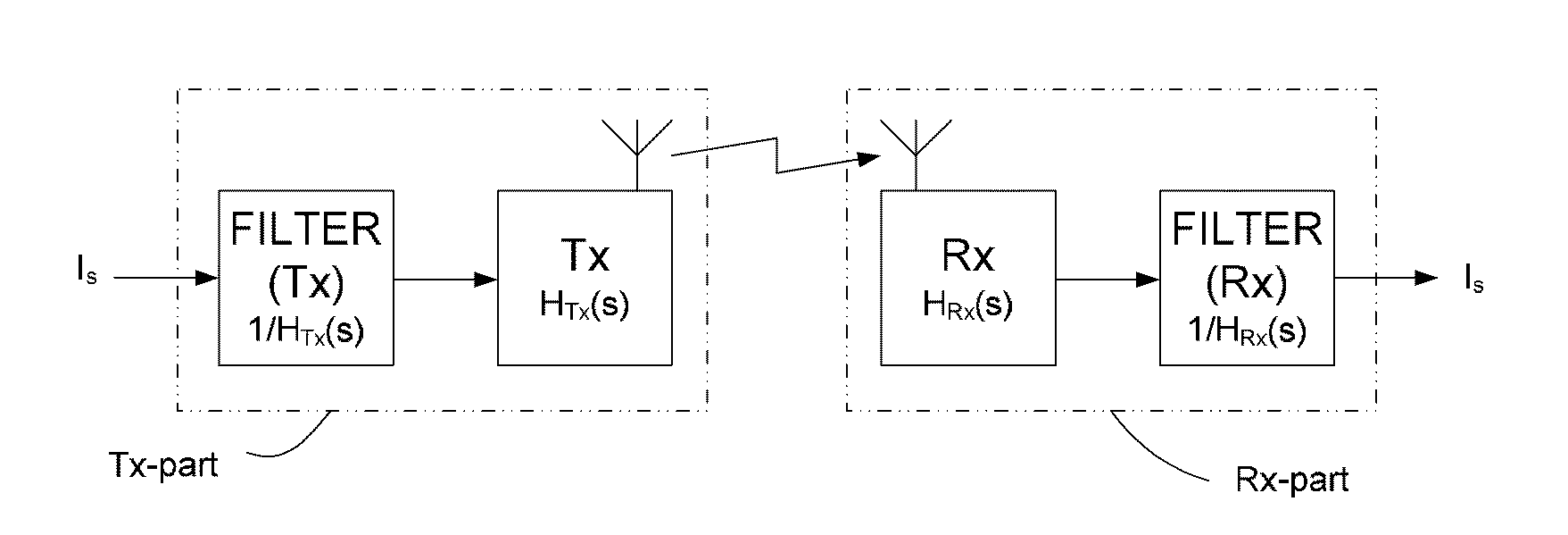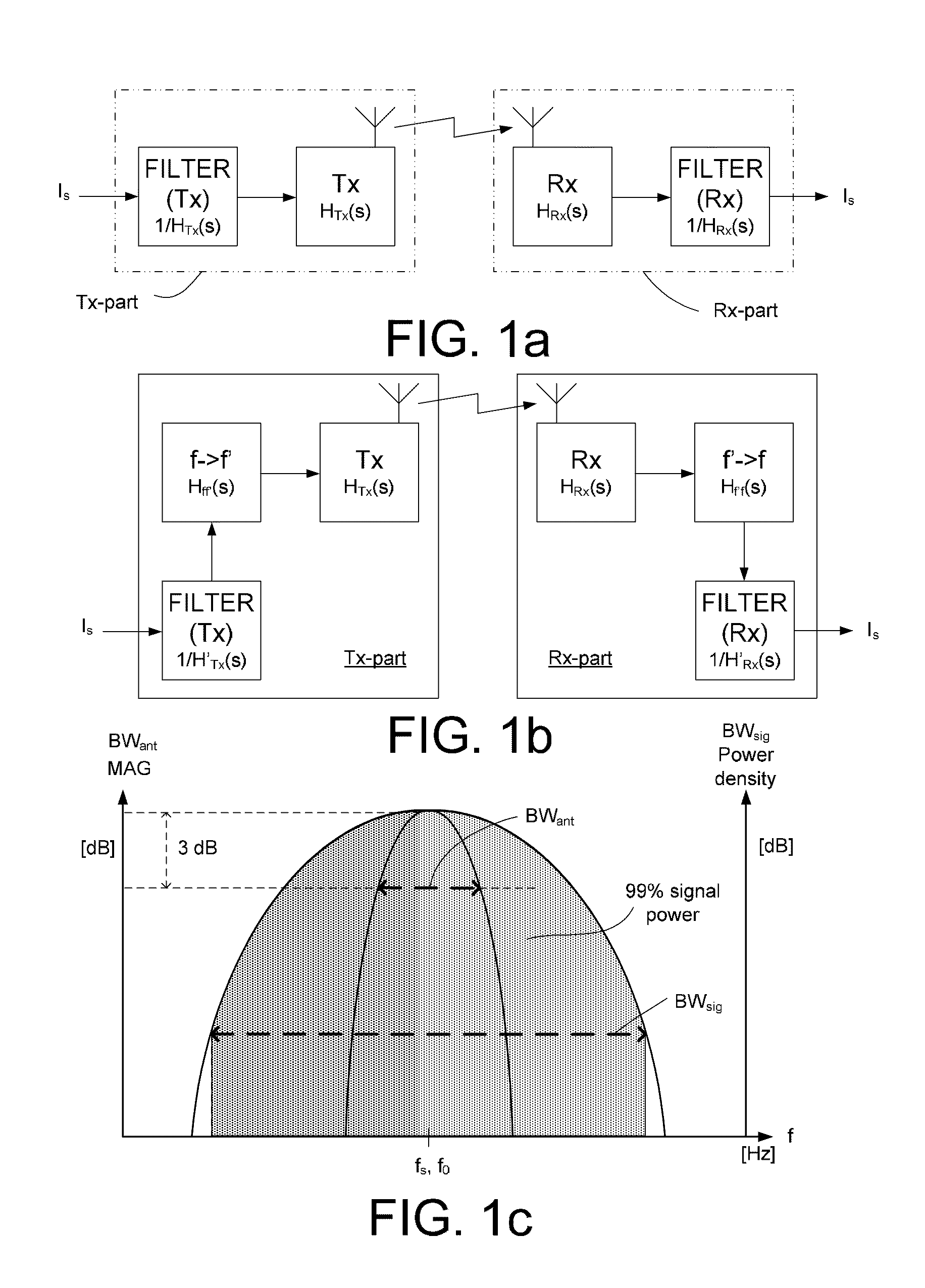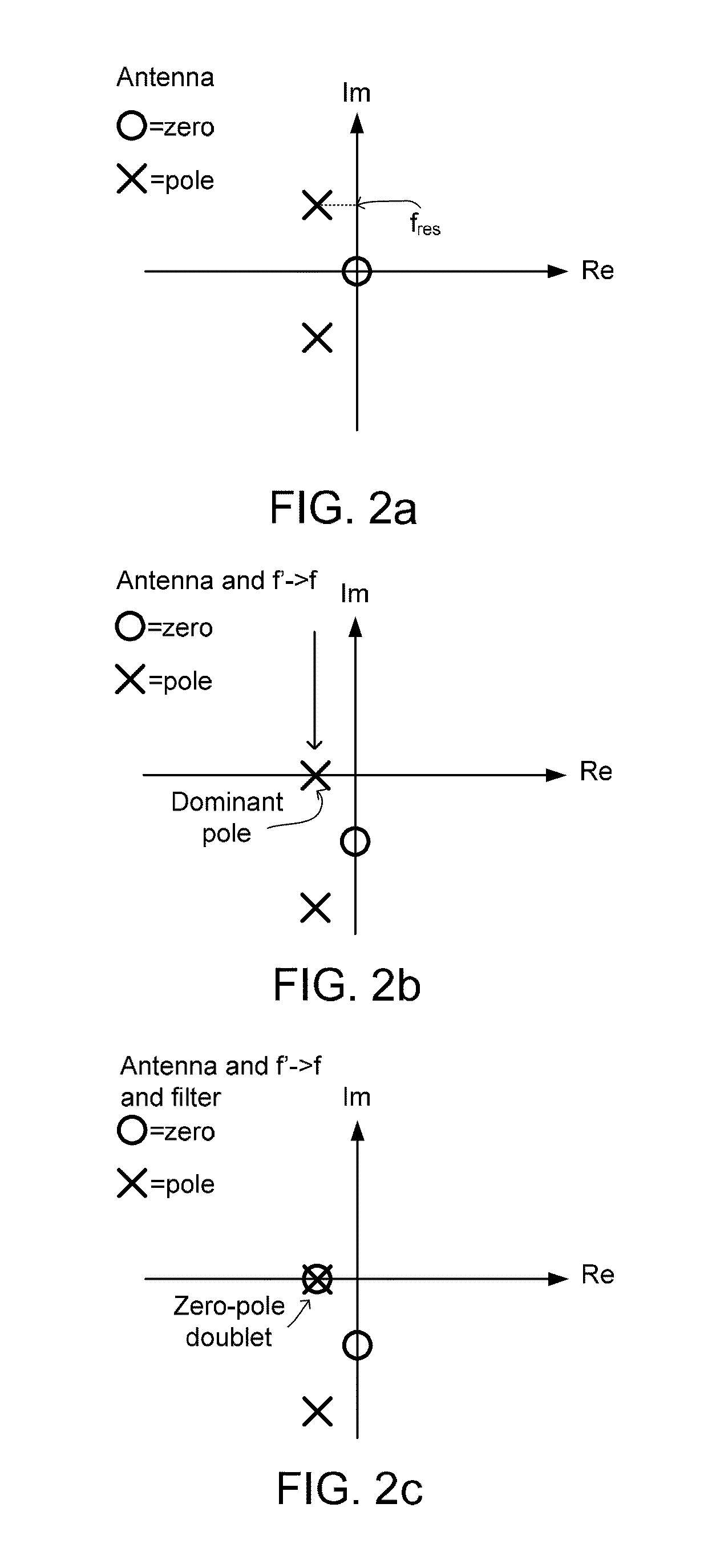Wireless communication system with a modulation bandwidth comparable to or exceeding the bandwidth of the transmitter and/or receiver antennas
a wireless communication and modulation bandwidth technology, applied in the field of wireless communication systems, can solve the problems of distorting communication signal caused by antenna frequency response, and achieve the effects of reducing bwant, reducing transmission range or data rate, and increasing the q-factor of the antenna
- Summary
- Abstract
- Description
- Claims
- Application Information
AI Technical Summary
Benefits of technology
Problems solved by technology
Method used
Image
Examples
first embodiment
[0084]FIG. 1a is a block diagram of a transmitter part and a receiver part of a first embodiment, The wireless communication system comprises two physically separate devices, a first device comprising a transmitter part comprising a transmitter (Tx) for wirelessly transmitting a modulated electric signal to a receiver part of a second device, the receiver part comprising a receiver (Rx) adapted for receiving the modulated electric signal from the transmitter part. The transmitter (Tx) comprises a Tx-antenna (and tuning circuit) for transmitting the modulated signal. The receiver (Rx) comprises an Rx-antenna (and tuning circuit) for receiving the transmitted signal. It is generally assumed that the Tx- and / or Rx-antennas have a bandwidth BWant, which is substantially equal to or smaller than a modulation bandwidth BWsig of the modulated signal to be transmitted and received by the Tx- and Rx-antennas, respectively (cf. FIG. 1c). The transmitter and receiver parts each further compris...
second embodiment
[0085]FIG. 1b is a block diagram of a transmitter part and a receiver part of a second embodiment, where the transmitter and receiver parts additionally each further comprise a frequency transposition unit (f->f′ and f′->f, respectively, e.g. in the form of a mixer) adapted for transforming a frequency range of an input signal to another frequency range. A signal Is comprising an information to be transmitted from the transmitter part to the receiver part is filtered by the equalization filter (FILTER (Tx)) and the filtered signal is frequency transposed in the Tx-frequency transposition unit (f->f′) and the resulting frequency transposed signal is fed to the Tx-antenna / tank circuit for being transmitted to the receiving part where the corresponding reception and signal processing functions are carried out (in units Rx, f′->f, FILTER(Rx)) to provide the received information signal Is.
[0086]As illustrated in FIG. 1c (showing an exemplary schematic relation between antenna and signal ...
PUM
 Login to View More
Login to View More Abstract
Description
Claims
Application Information
 Login to View More
Login to View More - R&D
- Intellectual Property
- Life Sciences
- Materials
- Tech Scout
- Unparalleled Data Quality
- Higher Quality Content
- 60% Fewer Hallucinations
Browse by: Latest US Patents, China's latest patents, Technical Efficacy Thesaurus, Application Domain, Technology Topic, Popular Technical Reports.
© 2025 PatSnap. All rights reserved.Legal|Privacy policy|Modern Slavery Act Transparency Statement|Sitemap|About US| Contact US: help@patsnap.com



